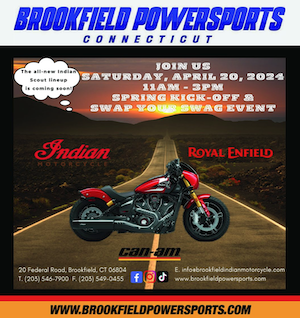By Steve Smith
 “Ride like you are invisible.” This sage advice has been around a long time and is still relevant today. Out on the road, it sure seems like we are invisible. Other drivers look right through us or pretend we are not there. During the riding season it’s not uncommon to find articles about motorcycle crashes in local newspapers that report the cause being the other vehicle that entered the rider’s right of way – the proverbial left turning car.
“Ride like you are invisible.” This sage advice has been around a long time and is still relevant today. Out on the road, it sure seems like we are invisible. Other drivers look right through us or pretend we are not there. During the riding season it’s not uncommon to find articles about motorcycle crashes in local newspapers that report the cause being the other vehicle that entered the rider’s right of way – the proverbial left turning car.
Why is it that other drivers fail to see motorcycles? There are many sources of driver distraction including use of a cell phone, GPS, MP3 player, satellite radio, video players and more. Sometimes yelling at the kids in the back seat or simply carrying on a normal conversation with a passenger can be enough distraction to take our eyes off the road for a moment. Even the more alert drivers may not see a motorcycle because they are smaller, specifically narrower, than all other vehicles. A couple of years ago, I presented some thoughts about seeing, but not being seen; posted here.
What can we do to combat invisibility? Get noticed in traffic and be as visually conspicuous as possible. Always ride with your headlight on. Wear bright-colored clothing and helmet. Add reflective material for a visual boost. Other drivers see only what they expect to see, and many do not expect to see motorcycles as part of the normal traffic mix.
This has been an ongoing issue for years and states try to educate and increase motorcycle awareness among drivers. You have probably seen the “Motorcycles are Everywhere” bumper stickers. Maybe this public service announcement with actress Molly Culver needs more air time:
My advice is to improve your skills, strategies and attitude. An approved rider training course will provide knowledge and skill on how to maneuver your motorcycle in emergency situations. Practice these braking and swerving skills often to become proficient. It is important to understand that mental skills of awareness and judgment might be more important than having expert ability to maneuver a motorcycle. Responding early to situations is always better than having to react instantly when an emergency situation arises.
 Ride CT & Ride New England Serving New England, NYC and The Hudson Valley!
Ride CT & Ride New England Serving New England, NYC and The Hudson Valley!



